Siemens is the engineering group that is behind many of the products and services people take for granted in their daily lives. The list of products designed and manufactured by Siemens is almost endless.
It includes traffic lights, gas turbines, superconducting magnets in medical scanners, wind generators, automated factories as well as domestic appliances like kettles and fridges. It generates about 40% of the UK”s wind energy and it hosts, supports and maintains the BBC’s website including the development of the BBC iPlayer. The company has been operating in the UK since 1843 and employs more than 18,000 people. Across the world Siemens employs over 427,000 people.
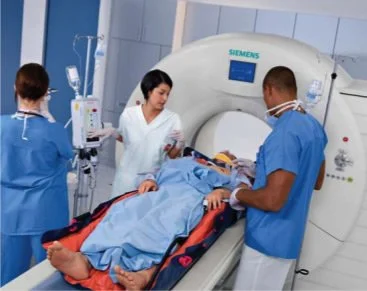
Innovation and engineering
Engineers use scientific principles to develop products or systems to solve real life problems. Much of engineering is about innovation rather than invention. This means that engineers transform creative ideas into improved products, services, technologies or processes.
A career within the field of engineering is exciting and varied as the work is constantly changing. Becoming an engineer at Siemens is about using energy, ideas and passion. It requires a range of skills and abilities that are needed across the whole business.
Opportunities
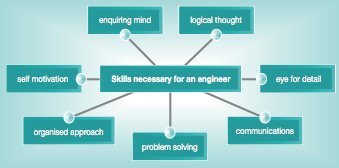
Siemens provides opportunities for young people at all levels to enter the world of engineering. It recruits at a number of different levels. For example, it offers apprenticeships for those entering the company with GCSEs. There are programmes for individuals with A-levels that provide work experience alongside the opportunity to study for a degree.
Siemens also recruits undergraduates and graduates into professional engineering jobs. It goes beyond the standard approaches to attracting good people because its employees enable it to be competitive. This approach has led to Siemens becoming an open culture with opportunities for employees at all levels.
People can enter a career in engineering at many levels. Professional engineers usually enter after a three-or four-year university degree. Others may enter as apprentice technicians following studies at school or college. However, regardless of entry level Siemens employees enjoy wide-ranging opportunities for further education and training. This can take the job in many different directions. For instance, they may go into areas such as research, manufacturing, sales and marketing, finance or project management.
By following an engineering career Siemens people have the opportunity to move into other disciplines.
This case study focuses upon three different theories of motivation and uses these to illustrate how employees are motivated within an engineering environment at Siemens.
Motivation stimulates people and encourages them willingly to put more effort into doing something. Well-motivated employees will feel fulfilled and happy in the workplace. Additionally, they are likely to be more productive and produce work of a higher quality.
Motivated individuals are influenced by a number of different factors. Initially, everybody has basic needs, such as for food or accommodation, which pay can provide. However, there are many other different factors that motivate individuals. A creative environment, such as that provided by engineering, can be very stimulating.
Some staff at Siemens thrive on the problem-solving aspect of their roles and respond to challenges. Other employees find the varied nature of the work motivating having the opportunity to try different roles. Siemens employees also value the fact that they are allowed to be imaginative and can influence their own work.
The structure of Siemens motivates individuals by empowering them to improve processes. Siemens provides the sort of environment where workers can learn new things and are given the opportunity to progress within the business. This culture demonstrates that Siemens values its employees and helps to recruit the next generation of engineers.

A motivated workforce puts more energy into work in order to achieve the required outcomes. Motivated employees feel that their work is special. They are encouraged to take pride in what they do. There is low absenteeism because employees are happy to go to work. Individuals are more loyal to the organisation and stay longer because their needs are being met.
Unmotivated workers will not be as satisfied with their role in the work environment. The job may not be as important for them and this may lead to poor performance. The workers may not be as efficient. They are likely to be absent more often and may ultimately leave the organisation. All of these factors will have a negative impact on a business, either through a drop in reputation, poor productivity or increased costs involved in replacing workers or covering absent staff.
Frederick Taylor looked at work within a production setting. He was one of the earliest advocates of professional management and believed that the relationship between task and workers’ cooperation could be standardised.
Taylor’s scientific management theory involved observing workers to see how they carried out tasks. As a result of his work tasks were broken down into smaller scale units of work, requiring little understanding from employees of what they were doing.
This job specialisation meant that workers undertook tasks with a narrowly defined range, for which they were rewarded according to how much they produced. Payment systems rewarded those who produced the most. Today, engineering needs people with greater capability and flexibility. Engineering staff at all levels need to use their knowledge and skills in many different situations.
Taylor’s way of working is very different from the needs of the modern working environment. However his work has helped form a scientific understanding of how work is organised.

Innovation culture
At Siemens, the culture encourages employees to become more involved in their work, suggesting and implementing improvements. Control as originally suggested by Taylor, which removed personal responsibility, is not what modern engineering is about. Controls still exist but the person doing the job is encouraged to work as part of a team and become involved in deciding the best way to do or improve a task.
This is because in engineering there is a continuous need to develop new and better products and processes. They cannot be confined to one way of doing things. For example, a new product or process may open the way to new markets.
Observing employees doing a job helps to understand better some of the processes. However, this alone should not be used as a form of control. By working with individuals as they perform their roles, it is possible to harness people”s enthusiasm and their ideas so that improvements can be made.
This provides them with rewards and benefits, not just in terms of pay, but also in job satisfaction and recognition. Working with employees helps to meet their higher needs.
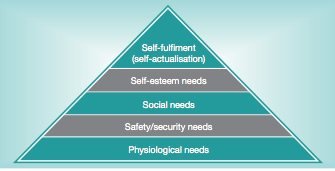
One of the most famous theorists on motivation is Abraham Maslow. In 1954 he developed a ‘hierarchy of needs’. This he represented as a triangle. The most basic needs are at the bottom. The more complex needs are at the top.
- At the bottom of the hierarchy are the basic needs which drive people to work. This includes the need for food, water, warmth, shelter and clothing.
- Once these needs are met, individuals then want safety and security. This includes physical security at work. It also includes safe working practices, job security and financial security.
- Social needs are all about groups and belonging. Socialising with a group of friends or with work colleagues fulfils social considerations. In addition, employees like to feel part of an organisation.
- Self-esteem needs might include the rewards from a workplace. It might include a benefits package or even status within the workplace.
- Self-fulfilment is about working to one’s full potential. This would involve doing something challenging, creative or interesting.
Recognition
Siemens provides the opportunity for employees to fulfil their higher-order needs. For skilled, creative workers, like engineers, these are likely to be of great importance. Esteem is about having self-respect and the respect of others. Feeling that one’s work is making a difference can improve self-esteem.
Recognition of an employee’s achievements by the employer also helps to meet esteem needs. For example, Siemens runs schemes in which suggestions and projects for improvements are rewarded. This could be financially, either individually or as part of a team, or in terms of peer or management recognition of their achievements.
Developing people
Self-actualisation is concerned with workers fulfilling their potential. Engineering work allows employees to do this by enabling them to get involved and take responsibility for their own jobs.
An engineering environment generates excitement and challenges. Individuals can seek to make improvements and changes.
Original solutions and ideas are required to solve problems on a regular basis. These appeal to the higher needs of employees. It is also possible to use technology to identify new ways of working and new processes.
Siemens offers engineering staff training and development opportunities. This links with self-actualisation as it helps engineers to extend their capabilities which may lead to a progression up the career ladder. Training and development also helps individuals to meet the changing demands of the business’ global markets.
Frederick Herzberg also believed that people have needs that should be satisfied within the workplace. He felt that if people had their needs satisfied they would be productive employees. Herzberg’s research focused upon the activities of engineers and accountants. It resulted in his two-factor theory. Herzberg theorised that there were two influences that affected how people felt about their job.
Motivators (or satisfiers)
There are a number of aspects of any workplace that give individuals job satisfaction. The nature of the work itself is very important. Some individuals just love what they do. Things that satisfy people in the workplace and make them happy are:
- the opportunity for personal development
- achievement
- recognition
- promotion
- levels of responsibility.
Hygiene factors (dissatisfiers)
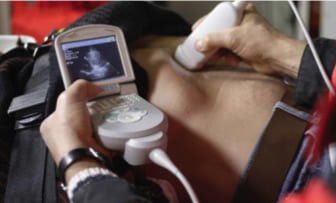
Hygiene factors are things that can upset employees in the workplace. They are outside the control of the individual but have a huge influence on the roles of each worker. For example:
- Company policy may frustrate some employees and be viewed to some as a hindrance.
- Bureaucracy or needless paperwork may be considered to be a barrier to getting a job completed.
- Sometimes working conditions are not thought to be suitable.
- Other factors may be poor salary or staff feeling they are not valued nor consulted.
Herzberg’s theory showed that managers need to attend to the motivating factors and personal development aspects to improve employee performance. They also need to ensure that hygiene factors are met or managed in order to avoid dissatisfaction in the workplace.
Strengthening motivation
Siemens managers have to balance dissatisfiers against motivators. Policies and procedures that may cause dissatisfaction have to be managed. To reduce dissatisfaction, Siemens believes the best method is to raise awareness of issues with employees and encourage their involvement. They then understand and recognise the need for change. This has helped Siemens to manage change programmes.
Motivators at Siemens are the factors that stimulate engineers to work in the best way possible. They enjoy the characteristics of their roles. Being empowered helps them to manage their roles and enables them to use this power to change things.
Whether individuals enter the organisation after they have taken their A-levels, as apprentices or as graduates, the work they undertake is stimulating. The creative nature of engineering appeals to people who like a challenge and who enjoy solving problems within a creative environment.
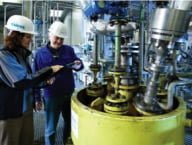
Motivating employees is an important role for managers. This case study illustrates how, in a modern engineering environment like Siemens, the work of Maslow and Herzberg applies more than Taylor’s.
In the past, as the work of Frederick Taylor illustrated, motivation theory linked very closely to pay and output. Individuals now need to be motivated in a completely different way. They have higher order needs. This was illustrated through the work of Abraham Maslow.
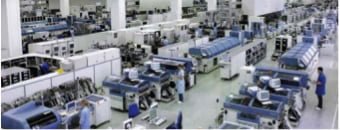
Frederick Herzberg discovered there are also elements within the workplace that both satisfy and dissatisfy employees.
Lower order needs are met by the organisation providing good pay and a safe working environment. Higher order needs are also provided for its engineers through training and development, as well as the opportunity to undertake creative and challenging work.
Siemens employees are motivated by being recognised for their achievements and by having opportunities for progression, regardless of the level at which they started working for Siemens.
